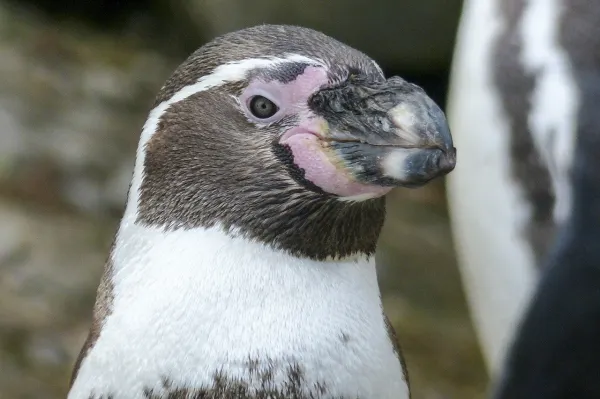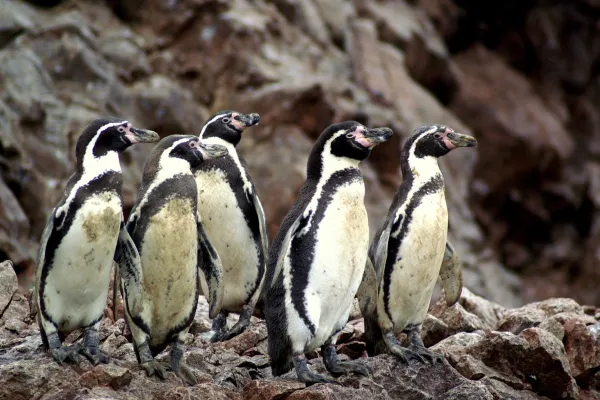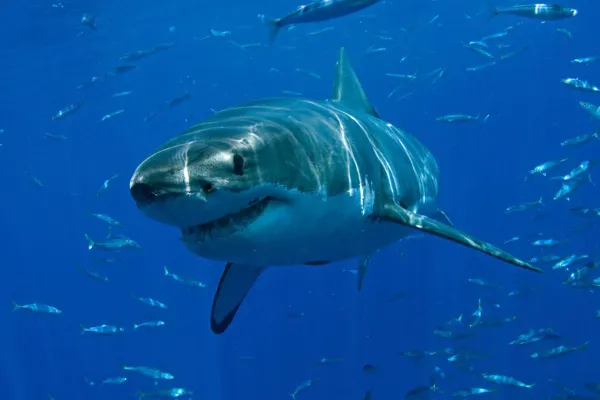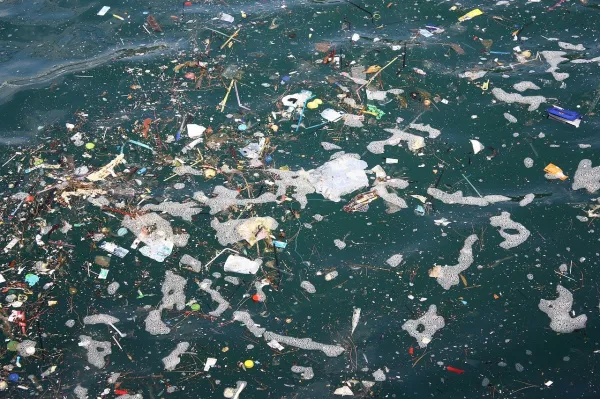The Humboldt penguin (Spheniscus humboldti) is one of the 18 species of penguins currently existing on Earth. Its name comes from the cold Humboldt Current that flows along the Pacific coasts of South America, where this species is commonly found.
In this article, we'll explore whether the Humboldt penguin is truly endangered, what threats it faces, and what actions can be taken to protect it from extinction.

According to the IUCN (International Union for Conservation of Nature) Red List, the Humboldt penguin is currently classified as Vulnerable, which means its global breeding population is in decline and it faces a high risk of extinction in the wild.
Although not yet officially categorized as endangered, the "Vulnerable" status is only one step away from becoming endangered. It's estimated that there are only about 23,800 individuals of Humboldt penguins left in the wild.
Scientific Name: Spheniscus humboldti
Size: Medium-sized penguin, standing 56–72 cm tall and weighing 3–5 kg.
No Sexual Dimorphism: Males and females look almost identical.
Appearance: Black back, white belly, and a black horizontal stripe running across the chest. The beak is black with grayish spots, while the face and parts of the legs show pink coloration.
Habitat: Prefers temperate coastal waters near the equator—unlike most penguins that thrive in cold regions.
Range: Native to the coasts, cliffs, and rocky islands of Chile and Peru, though individuals are occasionally seen in Argentina and Ecuador.
Migratory and Colonial Breeder: They nest in small to medium-sized colonies.
Diet: Carnivorous, feeding on anchovies, sardines, silversides, squid, octopus, and crabs by diving into the ocean.
Reproduction: Becomes sexually mature at 2–3 years. Females typically lay 1–2 eggs per breeding season, which incubate for around 5–6 weeks. Humboldt penguins are monogamous.

Humboldt penguins face numerous natural predators, including:
South American sea lions (Otaria flavescens)
Culpeo foxes (Lycalopex culpaeus)
Killer whales (Orcinus orca)
Eggs and chicks are also frequently predated by:
Gulls, caracaras, black vultures
Invasive species such as rats, dogs, and cats introduced by humans
Humans, surprisingly, are also direct predators—penguin meat is considered a delicacy in some coastal regions of Chile and Peru.

Despite being protected by law, Humboldt penguins are often captured illegally. Chicks and juveniles are sold on the black market as exotic pets or private collection animals. Penguins are also hunted for their meat, fat, and skin.
Overfishing by humans significantly reduces the penguins’ food supply. Additionally, urban and industrial expansion continues to destroy their nesting habitats.
Human activities such as:
Mining
Guano extraction
Tourism
Coastal development
…all contribute to a decline in suitable nesting areas, pushing the species further toward extinction.
Global warming leads to rising ocean temperatures and frequent flooding of nesting sites. The El Niño phenomenon, in particular, alters ocean currents, wind patterns, sea levels, and rainfall, making food scarce and disrupting breeding.
As a result:
Nests are destroyed
Eggs are lost
Penguins change behavior
Mortality increases among chicks and adults
Oil spills pose a grave threat to Humboldt penguins. When oil contaminates seawater, penguins often ingest or absorb the toxins through their feathers, which can lead to poisoning or death. Oil contamination also forces penguins to abandon their habitats.

Invest in conservation programs
Enforce strict environmental laws: Combat illegal hunting, habitat destruction, and unsustainable fishing
Educate the public: Raise awareness about the importance of penguin conservation
Share factual information: Help spread awareness of the penguins’ vulnerable status
Support wildlife foundations: Donate, volunteer, or share their efforts on social media
Reduce your ecological footprint: Recycle, avoid single-use plastics, and never litter in coastal areas
Practice ecotourism: Visit wildlife areas responsibly and sustainably
Refuse to buy penguin-related products: Do not consume penguin meat or eggs or buy goods made from their fat or skin
Control your pets: If you live in coastal areas of Chile or Peru, don’t let dogs or cats roam freely—they can harm penguin eggs and chicks
Although the Humboldt penguin is not officially endangered yet, it’s on a dangerous path. Human behavior, environmental changes, and insufficient protection measures continue to threaten this unique species. Only through global awareness, local action, and coordinated conservation efforts can we ensure their survival.
Bibliografía
Pingüinos (Orden Sphenisciformes). (s. f.). NaturaLista. Disponible en: https://www.naturalista.mx/taxa/67564-Sphenisciformes
B. (2020). Pingüino de Humboldt, Características. BioEnciclopedia. Biodiversidad, Animales, Medio Ambiente, Vida. Disponible en: https://www.bioenciclopedia.com/pinguino-de-humboldt/
Pingüino de Humboldt. (s. f.). Mundomar Benidorm. Disponible en: https://www.mundomar.es/animales/pinguino-de-humboldt/
Pingüinos de Humboldt: aves en situación vulnerable. (s. f.). Conservamos por naturaleza. Disponible en: https://www.conservamospornaturaleza.org/noticia/pinguinos-de-humboldt-aves-en-situacion-vulnerable/
animal tags: Humboldt penguin
We created this article in conjunction with AI technology, then made sure it was fact-checked and edited by a Animals Top editor.